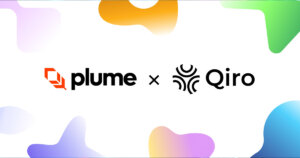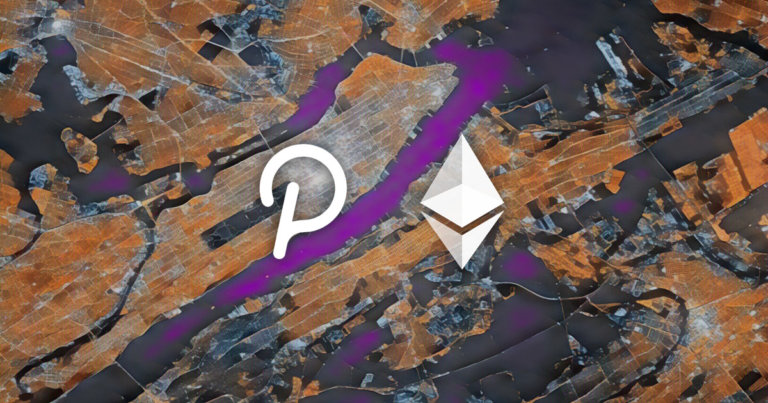 Mapping Ethereum’s DeFi eco-system projects on Polkadot
Mapping Ethereum’s DeFi eco-system projects on Polkadot Mapping Ethereum’s DeFi eco-system projects on Polkadot
Polkadot has been rapidly growing from a niche blockchain project to one of the richest DeFi networks that have real potential to compete with Ethereum. While still in its infancy, the network already has a robust ecosystem of decentralized applications, all of which offer similar, and sometimes even more functionalities than their Ethereum counterparts.
We take a look at some of the upcoming Polkadot parachains and compare them to their Ethereum counterparts.
Projects flocking to utilize Polkadot’s scalability and decentralization
Introduced in 2016, Polkadot has become one of the most influential blockchain platforms on the market, with its sights set on achieving unprecedented decentralization. The blockchain was created by Gavin Wood, one of the original founders of Ethereum, who envisioned the platform as a way to provide businesses and developers easier access to blockchain technology.
Wood’s quest, as time has shown, has become incredibly attractive to developers. In the past year, dozens of new projects have launched on Polkadot with dozens more planning on migrating at least a portion of their networks to a Polkadot parachain.
Smart contract execution
One of the most exciting categories of the DeFi ecosystem that have gotten a lot of traction on Polkadot are smart contract execution projects. Smart contracts on Ethereum cannot be executed by a third-party protocol built on top of Ethereum, which drastically limits the effectiveness of the network.
Polkadot, however, enables developers to launch all kinds of smart contract execution platforms on its parachains. Phala, Edgeware, Plasm, and Moonbeam are the most promising smart contract execution projects currently on Polkadot, each one bringing a different kind of functionality to the network.
The Phala Network brings a layer of privacy to smart contract execution, with its founders claiming it’s the first confidential smart contract network built on Substrate. Phala applies a Trusted Environment Execution (TEE) design that allows confidential data to run in an isolated and private environment and outputs results alone with authorization.
Phala currently has two products—the pLIBRA and Web3 Analytics. The former is a confidential computation component built for Libra granted by Web3 foundation, while the latter is a tool that analyzes user data and output results without invading personal privacy.
Edgeware is a third-generation, self-upgrading smart contract platform in the Polkadot ecosystem. The Substrate-based chain allows users to create smart contracts written in Rust and compiled into WASM. What makes Edgware unique is the fact that it’s able to provide ongoing self-improvement without requiring the system to stop. The platform’s modularity separates different blockchain parts into modules, allowing changes to be performed on just a single part of the blockchain, not the whole system.
Moonbeam is another Ethereum-compatible smart contract parachain on Polkadot. Set to reach full capacity in 2021, the big part of its functionality is offering a set of unique features that target Ethereum developers. It’s a highly-specialized Layer 1.5 chain that mirrors Ethereum’s Web3 RPC, accounts, keys, subscriptions, logs, etc. The goal of the platform is to extend the base feature set found on Ethereum with additional features and functionalities that include on-chain governance, staking, and cross-chain integrations.
The Plasm Network is a scalable smart contract platform on Ethereum supporting Layer 2 solutions. One of Plasm’s most important characteristics is the fact that it’s compatible with different types of virtual machines—as of now, the protocol supports EVM, OVM, ECDSA, and Solidity. The network was the first parachain to launch on Polkadot’s Rococo V1 testnet and the first platform to deploy a smart contract on the testnet.
Credit markets and stablecoins
With industry powerhouses such as Maker, Tether, and USDC all hosted on Ethereum, it’s no wonder other blockchain platforms have trouble competing with the network effect Ethereum has. However, several Polkadot projects have launched as direct competitors to their Ethereum counterparts, showing big promises when it comes to acquiring a significant market share.
Equilibrium is a cross-chain implementation of Curve Finance on a Polkadot parachain, launched to help mitigate the costs of swapping assets on Ethereum. The protocol identified a need for low-slippage stablecoin swaps on Polkadot and enabled users to deposit collateral to create a decentralized stablecoin called EQ. Equilibrium is similar to MakerDAO, as owning the EQ token enables its users to participate in the protocol governance.
Acala is a fully-decentralized dual-protocol network and the first stablecoin to launch natively on Polkadot. The network, however, wants to become more than just another stablecoin—Acala’s development team has set out to build a DeFi hub that powers cross-blockchain liquidity and various other applications. Just like Equilibrium, Acala is Polkadot’s counterpart to Ethereum’s MakerDAO, Compound, and Aave protocols. The platform will enable users to borrow and lend the Acala Dollar (aUSD) to manage outstanding loans and earn interest on their holdings, as well as use the token to participate in governance. Once fully launched, Acala will also derivative and DEX trading of aUSD.
Akropolis is a Substrate-based chain providing a peer-to-peer way to cross-exchange value and data between informal and natively digital organizations. Originally launched on Ethereum, Akropolis suffered a devastating hack and has been shackled by Ethereum’s mounting fees. Launching the protocol as a Polkadot parachain has enabled the team to implement its Commitments to Future Cashflows (C2FC) financial primitive and simplify the creation of financial applications on Polkadot.
Bandot is a mortgage-based stablecoin based on Substrate, supporting the value exchange between different parachains on the Polkadot network. The platform’s users can issue smart tokens through the Bandot protocol and automatically exchange them through the value anchoring of the Bandot AMM. Users holding BDT, the protocol’s native token pegged 1:1 to the USDT, can participate in on-chain governance and access staking mortgages. Bandot’s BDT supports different types of currency collateral—DOT, BTC, and ETH.
Decentralized exchanges
Once considered the heart and soul of the Ethereum ecosystem, decentralized exchanges recently began suffering from mounting gas fees and increased congestion. Users looking to migrate to cheaper and more efficient options will benefit from Polkadot’s counterparts to the ever-popular DEXs such as Uniswap, Curve, Balancer, and Bancor.
Polkaswap is a non-custodial cross-chain AMM DEX designed especially for the Polkadot and Kusama ecosystems. The decentralized exchange employs a unique Aggregate Liquidity Technology (ALT) offering near-boundless liquidity with the security and convenience of a decentralized exchange. Polkadot’s interoperability enables Polkaswap to trade any tokens—decentralized exchanges based on Ethereum are limited to the network’s ERC-20 tokens. As it’s built on the SORA Network, Polkaswap will offer lower gas fees, making lower volume trades possible. Liquidity providers on the network are rewarded in the PSWAP token, earning 0.3% of trading fees per transaction.
HydraDX is another direct competitor to Ethereum’s Uniswap and Curve. A decentralized platform powered by Substrate, HydraDX enables developers to implement system-wide upgrades without triggering a hard fork. This makes HydraDX much more functional than its Ethereum counterparts—the platform enables users to swap cryptocurrencies from different blockchains, provide liquidity to earn rewards, and create new liquidity pools for new tokens. HydraDX implements an unconventional AMM model, using a single decentralized pool whose liquidity comes from individual liquidity provers and the platform itself. Liquidity provided by the protocol uses the platform’s native cryptocurrency, HDX, while individual LPs provide a wide basked of assets.
Disclaimer: CryptoSlate has received a grant from the Polkadot Foundation to produce content about the Polkadot ecosystem. While the Foundation supports our coverage, we maintain full editorial independence and control over the content we publish.



 CryptoQuant
CryptoQuant  Kaiko
Kaiko 




























































































